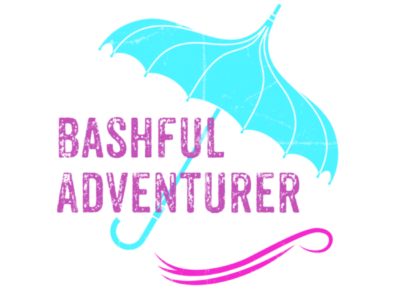If you are not into the film, should you bother visiting Cong?

The town of Cong in Ireland very much celebrates the John Wayne film, The Quiet Man, which was filmed here. But if the movie just does not resonate with you, should you bother visiting Cong? Photo credit: M. Ciavardini
As robust as one’s Netflix account might be, some of us just are not big fans of The Quiet Man, the John Ford-John Wayne-Maureen O’Hara film about a boxer who returns to his family’s native Ireland and, of course, falls in love. Filmed in the 1950s in Cong, Ireland, the production apparently made a big impact on the place. Today, a Quiet Man museum can be found there, and so can Pat Cohan’s Bar, a place that played a prominent role in the movie. The cast stayed at the nearby Ashford Castle, and some scenes were also filmed on its grounds. But if John Wayne and the seemingly bizarre story of a wife who will not consummate her marriage until her brother hands over her dowry to her boxer husband who is reluctant to fight because he accidentally killed a guy once are not precisely one’s cup of tea, is a visit to Cong worthwhile?

The Quiet Man Museum in Cong celebrates the John Wayne movie of the same name. Photo credit: M. Ciavardini
Surprisingly, yes. Situated on the border of County Mayo and County Galway, Cong provides a fun day trip—about an hour’s drive—from the city of Galway. While the Brawny Sherpa fritters about town discovering all things John Wayne, I will be appreciating Cong Abbey. What I come to understand during our time in Ireland is that saying you’re going to an abbey in Ireland is a little like telling a New York kid they’re going to see the dinosaurs at the Museum of Natural History. The dinosaurs are dead, and visitors just get to see their bones. The same holds true with any number of abbeys in Ireland, including the one in Cong. When contemplating the abbey, I don’t quite understand that there will not be any monks going about their business or that my visit will be open-air.

A church was built in Cong in the 600s. What remains of what became Cong Abbey is open to visitors today. Photo credit: M. Ciavardini
Sure, thatched roofs are environmentally friendly, but it seems like a single flaming arrow could bring down an entire castle. In short, visits to many sites in Ireland are ones that no longer feature roofs, as is the case with the abbey in Cong.
A church was built here in the 600s, and then back and forths with a bit of violence thrown in ended in rebuildings over time. What remains as Cong Abbey reportedly stems from the 1200s. Explore what is left of the abbey itself, but also appreciate the grounds. I most enjoy the monks’ fishing house on the Cong River. Built in the 1400s or 1500s, a trap door in the floor of it provides direct access to the river below, allowing monks to trap fish in relative warmth with a net. A very narrow walkway allows bold visitors to take a peak for themselves.

Accessed by a narrow walkway, the monks’ fishing house in the Cong River gives visitors a sense of sustainable living. Photo credit: M. Ciavardini
After walking around the town for an hour or so, we hop back into the car and backtrack to Ashford Castle on Lough Corrib. In 1228, Ashford Castle was founded by the Anglo-Norman Burgo family. In 1715, a French-like chateau was added, and then, in 1852, a member of the Guinness family, of the beer Guinnesses, bought it via the Encumbered Estates’ Court, an entity established by the British to help sell properties that could not be maintained by their owners because of the Great Famine. Today, Ashford Castle is part of the Red Carnation Hotel Collection and offers a spa, afternoon tea, boat trips, archery, clay shooting, falconry, kayaking, golf, tennis, and other activities. In short, visitors will not be bored here. One note: This is not a place where you want to dress down. We walk the grounds and wish we had been smart enough to stay here. Next time!
For Bashful Adventurers
- Cong is within easy driving distance of Galway. If you want to indulge in some overnight luxury, reserve a room at Ashford Castle. When heading back to Galway, make some time to stop at Ross Errilly Friary.
- Wear hiking boots or other sensible shoes while walking around Cong, especially if you plan to cross the narrow walkway to the monks’ fishing house—there are no railings, and the river swirls beneath.
- Ashford Castle is a bit of a fancy place. Dress accordingly.
—Lori Tripoli

Ashford Castle was once owned by a member of the Guinness family and is now a hotel. Photo credit: M. Ciavardini
~Advertisement~
~Advertisement~
Planning a visit to Ireland? You might like these posts:
- Driving in Ireland
- The Mysticism of Ross Errilly Friary
- Cruising Killarney
- A Dublin Walking Tour
- Is the Book of Kells Worth a Visit?




